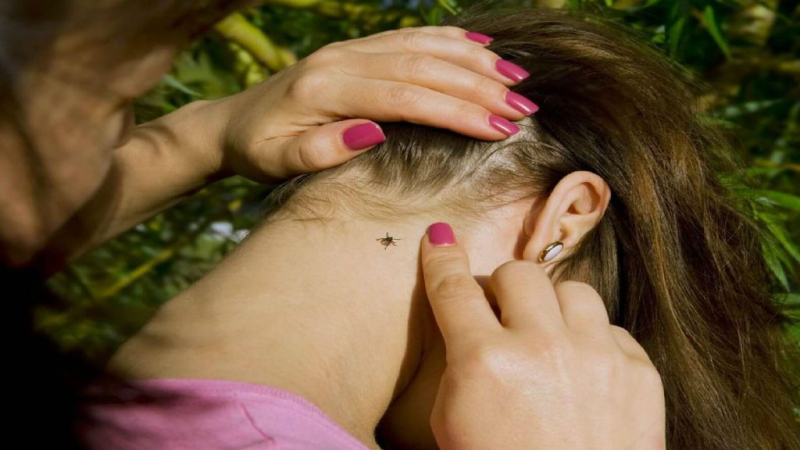
Tick bite: how to protect yourself and what to do when a parasite is detected
1
With the onset of spring, we spend more and more time in nature. During this period, ticks begin to activate, whose bites can lead to death. We tell you what to do to protect yourself from meeting with parasites, and what to do if a tick still sticks to you.
How to avoid a tick bite?
When visiting areas where there is a high risk of catching a tick, it is recommended to wear light-colored clothing that covers the body as much as possible, since the tick bite is imperceptible and it will be difficult to notice the parasite on dark-colored fabric. Instead of a t-shirt, give preference to a sweater with long sleeves, instead of shorts and a skirt – pants, preferably tucked into socks or shoes. It doesn't hurt to take a scarf with you, because the neck is one of the favorite places for a tick to bite – the skin on it is the thinnest, and the blood vessels are located closest.
It is also recommended to collect your hair in a bun and wear a hat if necessary , and if the latter is still not there – comb your hair about once every two hours to make sure that there are no insects on your head.
Before going out, apply an acaricidal and tick-repellent product to your clothes, which will help prevent an insect bite.
What to do if a tick does stick?
It is not recommended to remove the insect yourself. It is best to do this with a doctor at a trauma center or polyclinic at your place of residence. If you decide to remove the tick yourself, experts advise you to follow the following instructions. To begin with, you need to capture the insect with tweezers as close as possible to its mouthparts and, holding strictly perpendicular to the surface of the bite, turn the body of the tick around the axis, and then pull out the insect. The bite site must be disinfected with 70% alcohol, 5% iodine or green tea. After removing the tick, you should wash your hands thoroughly with soap. If a black dot remains, the skin should be treated with iodine and left until the remains of the tick crawl out by themselves.
In no case should you remove the tick with your bare hands, using oil or kerosene – these liquids block the mosquito's airways , because of which she dies by injecting poison into the blood.
What next?
It is advisable to send the removed tick for research to find out if it is a carrier of infections. It is recommended to do this as soon as possible: immunoglobulin (a drug against tick-borne encephalitis) is administered in the first 96 hours from the moment of sucking the insect, and antibiotic therapy is carried out in the first 72 hours.
Before taking the tick to the laboratory, place it in a glass container with a piece of wet cotton so that it does not dry out. At the reception, you must provide data on when, where and approximately when you were bitten.









Leave a Reply